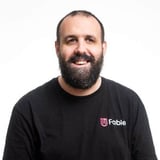Summary
Curious about how we solve problems and design user-centric products at ServiceNow? During this session, you'll learn about the framework behind our user experience design process and the various roles and activities involved within each phase. You'll also get hands-on experience with a rapid ideation session.
Key Insights
-
•
ServiceNow's design principles—Focus, Flow, and Love—guide inclusivity, workflow efficiency, and emotional engagement in product design.
-
•
The Experience Design Methods (EDM) provide a clear, cross-functional process that aligns designers, researchers, engineers, and PMs.
-
•
Skipping foundational discovery phases leads to designing irrelevant or unusable products, as shown in their doggy daycare app example.
-
•
Empathy and journey mapping are key activities to deeply understand user needs and context before designing solutions.
-
•
In ideation, generating a broad range of ideas first, then narrowing based on feasibility and priorities, balances creativity with practicality.
-
•
Using tangible artifacts like storyboards and matrices helps align stakeholders and focus on user benefits and product values.
-
•
Rapid low-fidelity prototyping encourages quick feedback loops without wasting resources on details too early.
-
•
Close designer-engineer collaboration during implementation and thorough visual specifications ensure design fidelity in the final product.
-
•
Frequent user testing and prioritizing high-severity issues early help deliver user-centric and high-quality designs.
-
•
Organizational growth brings chaos which can be mitigated by consistent processes and clear communication standards.
Notable Quotes
"Focus principle ensures everything we design is inclusive, accessible, and simple to use across cultures and countries."
"Flow principle reminds us to accelerate both the customer and the users to get their work done effectively."
"Love principle is about emotionally supporting users, celebrating achievements, and creating visually beautiful products."
"If we skip the discover phase, we don’t understand the problem and end up designing something irrelevant."
"We encourage everyone to think big first then trim down based on priorities and keep a backlog of good ideas."
"Experience Design Methods is tailored for our organization to align research, design, engineering, and product management."
"Rapid low-fidelity prototypes let us get quick feedback without stakeholders focusing on minor visual details."
"Visual specs must include behavior, styles, accessibility, and edge cases so developers build accurately."
"Post-implementation reviews help catch bugs or style issues before customers see them, maintaining high quality."
"Building trust in the user is fundamental, especially in digital products like our doggy daycare app example."
Or choose a question:
















More Videos

"I believed we could do more — more for the company, customers, stakeholders, and ourselves if we had more agency."
Nalini KotamrajuResearch After UX
March 25, 2024

"The end of history illusion is that we think we're done evolving, but we vastly underestimate future change."
Dean BroadleyNot Black Enough to be White
January 8, 2024

"I appreciate your allyship when I'm in the room, but I appreciate it more when I'm not in the room."
Denise Jacobs Nancy Douyon Renee Reid Lisa WelchmanInteractive Keynote: Social Change by Design
January 8, 2024

"Reporting progress with data and stories opens up opportunities with stakeholders and builds credibility."
Kim Fellman CohenMeasuring the Designer Experience
October 23, 2019

"Good design is honest and yes, the Jewel e-cigarette will honestly kill you."
George AyeThat Quiet Little Voice: When Design and Ethics Collide
November 16, 2022

"I don't want a component library for the account home. I want a system for all of that."
Nathan CurtisBeyond the Toolkit: Spreading a System Across People & Products
June 9, 2016

"Platforms need researchers and designers to make them meaningful and intentional for the people they are designed to serve."
Greg PetroffThe Compass Mission
March 10, 2021

"If you don’t do local research before launching a product, you risk disastrous failure."
Chloe Amos-EdkinsA Cultural Approach: Research in the Context of Glocalisation
March 27, 2023

"Agile can feel like a cult, but the data helps show it’s working and not just a belief system."
Mackenzie Cockram Sara Branco Cunha Ian FranklinIntegrating Qualitative and Quantitative Research from Discovery to Live
December 16, 2022


















